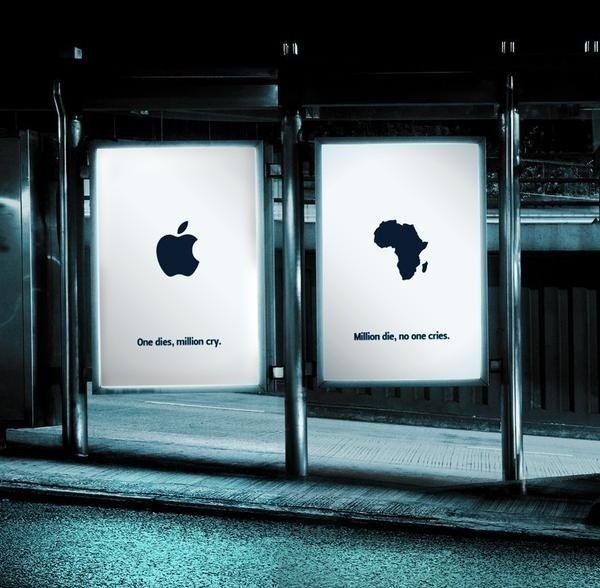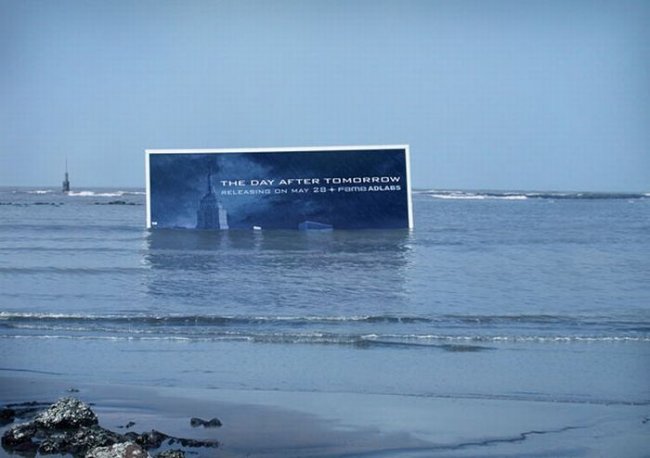Креативная реклама в интернете: где найти идею, секреты эффективности и примеры
Маркетинг и креативность являются неотъемлемыми понятиями. Дэвид Бернстайн – известный маркетолог Великобритании – считает креатив “центральным ядром” рекламной деятельности.
Креативная реклама представляет собой творческую деятельность, которая направленна на продвижение какого-либо товара или услуги на рынок. Делается это посредством использования нестандартных форм мышления, чтобы привлечь внимание людей к продукту рекламирования.
Главной целью рекламы подобного рода является использование привычных понятий и образов в другом ключе. То есть передать маркетинговую задачу и эмоциональный посыл компании, пользуясь игрой слов, звуков и сочетаний необычных ассоциаций. Основной метод воздействия маркетологов-креативщиков заключается в удивлении целевой аудитории с помощью необычных и оригинальных решений. Или же наоборот, используя минимализм, который будет ярко выделяться на фоне пестрящих реклам. Креативная интернет реклама на подсознательном уровне должна подтолкнуть потребителя к выбору данного товара.
Особенности разработки креативной рекламы
- Специфика рынка. Чтобы реклама была эффективной, необходимо знать особенности рынка до мельчайших деталей. На кого рассчитан данный товар: подростков или домохозяек? Мужчин или женщин? Этот товар рассчитан на его популяризацию или же привлечение новых потребителей, которые ранее им не пользовались, или пользовались, но другой маркой? Является ли эта часть рынка достаточно большой для того, чтобы нацеливать на неё рекламную компанию?
- Нацеленность. Креативная реклама в сети интернет будет гораздо действенней, если она основана на потребностях человека.
- Мыслить как потребитель. Большинство пользователей различных ресурсов заходят на сайты не для того, чтобы полюбоваться рекламой. Следовательно, реклама должна моментально притягивать взгляд, быстро сообщать главную идею.
- Использовать возможности цвета и контраста. Необычные цветовые решения всегда привлекают взгляд, а метод «визуальной иронии», в котором противопоставляются идеи, всегда был эффективным рекламным приемом.
- Избегать двусмысленностей. Информационный посыл должен быть точным и ясным. Потребитель не будет долго вглядываться в рекламу, пытаясь понять её тонкую суть, скорее перейдет к чему-то более интересному, по его мнению.
Этапы создания креативной рекламы
1. Бенчмаркинг. На этом этапе определяются стратегические цели по дальнейшему развитию рекламной кампании. Анализируется рынок и другие, более успешные фирмы в данной отрасли. Смысл бенчмарикинга – перенять положительный опыт других.
Также на этом этапе могут проводиться опросы среди целевой аудитории, для выяснения их мнения о производимом товаре. В дальнейшем результаты опроса используют для повышения имиджа компании.
2. Выбор только одной цели креативной рекламы. Для эффективности рекламы нужно сосредоточиться на одном показателе:
Обращение – ориентировано на клиентов, которые ранее пользовались другим брендом.
Задача: показать преимущества определенного товара.
Привлечение – креативная реклама направлена на новых клиентов, которые ранее не пользовались данным товаром.
Задача: вызвать интерес и желание приобрести товар.
Сохранение – направлено на свою целевую аудиторию.
Задача: поддержание имиджа компании у постоянных покупателей.
Увеличение: дать понять целевой аудитории, что данный продукт может быть востребованным во многих отраслях их жизни. Вызвать потребность в нем.
Задача: побудить потребителей использовать данный товар чаще.
3. Выбор базисных потребностей и мотивов, через которые будем доносить идею
Все потребности потребителя можно разделить на две группы: функциональные и эмоциональные.
Функциональные потребности или базисные направлены на то, чтобы удовлетворить физиологические потребности человека.
Примерами функциональных потребностей могут быть:
- желание в утолении жажды и голода;
- добраться за определенный промежуток времени в определенное место;
- устранить боль;
- охладить воздух или согреться.
Данный вид потребностей часто является ключевым, однако основываясь лишь на нем, нельзя строить всю рекламную кампанию.
Эмоциональные потребности. Покупая товар, потребитель стремиться самоутвердиться, поддержать свой имидж.
Например, приобретая одежду, человек стремиться хорошо выглядеть, быть любимым, комфортно себя в ней чувствовать. Желание соответствовать кому-либо или выглядеть «современным», может вынудить человека покупать товары известных и дорогих брендов.
4. Создание креативной идеи. Основываясь на данных, которые были получены на предыдущих этапах, придумывается креативная идея рекламы.
5. Выбор стилистики выражения идеи. Креативная реклама может содержать в себе множество стилистических элементов. Например: использование символического персонажа, фантазийная обстановка, создание настроение или образа, сравнительная реклама, борьба с устоявшимися стереотипами, нестандартная форма.
Упражнения для развития креативности
Развитие креативности – далеко немаловажный фактор при создании эффективной рекламы. Упражнения на креативность основаны на творческом мышлении, логике и умении соединять противоположные вещи.
- Безумство архитектора. Запишите на листике бумаги 10 несвязанных между собой существительных. Например: арбуз, динозавр, зубная паста, кофе, собака, изумруд, роза, ручка, мост, доллар. Эти 10 слов – 10 условий заказчика, которому Вы проектируете дом. К примеру, нарисуйте дом, у которого стены будут кофейного цвета, с тыльной его стороны будет находиться мурал (рисунок), где будет изображен динозавр охраняющий изумруды и т.д.
- Ассоциации (5+5). Выберите любой предмет, который только может прийти Вам в голову. Выбрали? Тогда напишите пять вещей, которые точно его могут охарактеризовать. И пять, которые совсем никак к нему не могут относиться.
- Тест на креативность. Возьмите лист бумаги и нарисуйте 30 одинаковых предметов, например, квадратов. Затем настраивайтесь на позитивный лад и начинайте превращать квадраты в мини-зарисовочки.
Примеры креативной рекламы
Для большего вдохновения предлагаю Вам ознакомиться с примерами креативной рекламы:
А также смотрите фейлы креативной рекламы в Интернете.
Креативную рекламу может создать каждый, а ее эффективность зависит только от Вашей фантазии.
Эксперт в области интернет-маркетинга. Руководитель маркетингового агентства MAVR.
Бизнес-степень «Мастер делового администрирования» (MBA).




